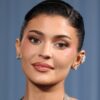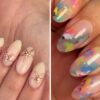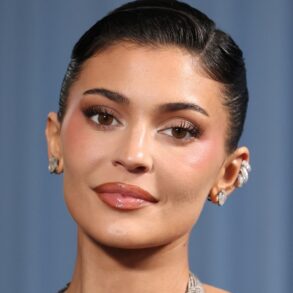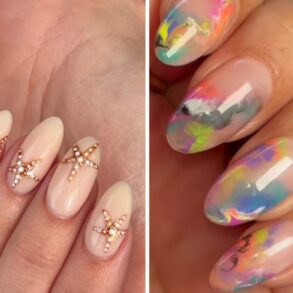
At Refinery29 Australia, we’re here to help you navigate this overwhelming world of stuff. All of our picks are independently selected and curated by the editorial team, but we may earn commission or other compensation from the links on this page.
“One of the first things I heard when I was younger, was that in order to spot someone queer, you have to look at the length of their nails — and they have to be short,” a friend, who identifies as a lesbian, once told me. By that logic, I’ve been committing a cardinal queer sin for the past year and a half: I’m a cisgender, bisexual woman who is addicted to nail extensions.
As my friend hinted, shorter nails have become a known ‘tell’ for those in the WLW (women who love women) community. Like her, this was one of the first things I was told about queer identity markers when I ‘came out’ several years ago. So, in 2022, when I decided to get nail extensions after years of going short, my then-girlfriend was terrified.
She’s not the only one who has shown caution. One Reddit thread I recently came across titled ‘Can we stop the hate on queer women who have nails?’, details an experience one poster had with their coffin-shaped acrylic nails. Specifically, the friend of a girl she was flirting with pointed them out as a “red flag”. In 2018, The Lesbian Stereotypes Survey conducted by LGBTQ+ news and entertainment website Autostraddle, found that out of over 12,000 people who identify as lesbian, 95% keep their nails short. This suggests it has become the ‘norm’.
Unsurprisingly, the red flag status that long nails seem to hold among the queer community is linked to sex and hygiene. Long, pointy nails can understandably appear daunting. A common school of thought is that longer nails can harbour more bacteria than short nails. Then there’s comfort and pleasure. “I think if I went on a date with someone who had long nails that are square-tipped, I’d be quite hesitant of what the fingering situation would be like,” a queer friend tells me. Recent beauty headlines highlighting the return of short nails due to their hygienic superiority haven’t helped with the assumption that nail extensions are “dirty” and “unsafe” particularly when it comes to finger penetration involving people with vulvas. But maybe this isn’t solely about hygiene and sexual pleasure (both of which, I concede, are valid). It’s about something bigger: perception.
The belief that queer people should have short nails is sometimes less about sex and more about reinforcing old, tired stereotypes about gender and sexuality. Let me explain. As a femme-presenting bisexual woman, I’ve experienced my fair share of biphobia and femmephobia — and it is nearly always due to the way I look. There was the time, for example, myself and a group of femme queer friends tried to get into a well-known club in London’s Soho. At the door, we were asked, “You do know this is a gay bar, right?”, before being turned away. My extensive makeup, styled, long bob hair, “feminine” wardrobe and, yes, my long nails, all seem to signal to fellow queers that I am straight. This only adds to the common feeling of not being “gay enough” as a bi woman. Lois Shearing, bi activist and author of Bi the Way, tells me, “There’s an idea in a lot of queer communities that queerness must look a certain way; for women, that is androgynous but not too butch or femme.”
In regard to nails, the notion that only short styles are conducive to safe, pleasurable, queer sex reinforces the stereotype that there is just one way to have sex between two people with vulvas. “There’s still a belief that queer sex looks a certain way or that you must be having a certain type of sex to be queer,” says Shearing. “For queer women, short nails have been used as a subtle way to flag to each other that you finger other people who have vulvas. But now there’s an idea that if you don’t do that, you aren’t a queer woman.” Not only is this biphobic, as it erases the queerness of women who may be in monogamous relationships with men, suggests Shearing, but it’s also just a bit boring, they say. And I would add that it’s narrow-minded.
I’ve certainly experienced this judgement myself, mainly via ignorant questions, such as “Back to having sex with men, then?” particularly when I returned to nail extensions. It was as if my current nail state was reflective of who I was sleeping with at any given time — and that it would simply not be possible for me to engage in sex with someone with a vulva if I had a longer manicure. So why do we continue to internalise these boring old clichés about what a queer person should look like and the type of sex they should be having? And why are we reaffirming ancient gender stereotypes while we’re at it?
On the one hand, I get it. Working out whether somebody you’re into is part of the LGBTQ+ community can be confusing. In the past, cues such as nails, hair and wardrobe have felt essential. “So much of LGBTQ+ history has taken place in secret, forcing queer people to find ways to ‘signal’ to one another,” explains Jen Winston, author of the critically acclaimed memoir GREEDY: Notes From A Bisexual Who Wants Too Much. As a result, adds Winston, “Personal style, especially style that involves visibly queering gender norms, has become integral to being seen.”
While of course valid, perhaps this way of defining people’s sexuality and gender identity is outdated. I’m all for nails being used to express a person’s identity, but should this not be celebratory, rather than exclusionary or judgemental? Luckily, this is something I believe we mostly now recognise in the community. “Long nails have and will always be a declaration of individuality […] and a resolute defiance of normalcy; so much of which aligns with the queer experience,” notes Alex Philamond, a talented nail artist who is also a part of the LGBTQ+ community. Bi women like me are wearing our nails a certain way not to attract or deter others, but simply because we want to express ourselves however we choose.
This is something to be encouraged on a larger scale, says Winston. “Rather than take gender as a script we should follow, I think it’s important for all of us — not just queer people — to interrogate the way we present our gender and why we present that way. All that matters is that we’re dressing and presenting in a way that feels authentic to who we are.”
My question going into this was whether my long nails made me ‘less queer’ somehow. I can now answer that question with a resounding no. In fact, I’ve learned to embrace my love of nail art and all the things that make me femme.
If you’re somebody with a vulva who has sex with others with vulvas and you’re still concerned from a hygiene and sex point of view, let me iron out any last concerns. First, while short nails are easier to keep clean on the whole, it doesn’t mean long extensions can’t be hygienic. The first port of call is regular cleaning. “Clean your nails daily or as needed with a soft nail brush and mild soap,” explains the team at So.Shell nail salon. They also suggest gently scrubbing the underside and around the edges of your nails to remove any dirt and debris. Occasional nail soaks (15-minute soaks with an antibacterial wash and warm water) are also beneficial, as is professional maintenance, where you can experience a deeper clean with the use of cuticle and nail tools. Nail artist Philamond also swears by Labology 3 Super Antibacterial Sanitiser Spray, for extensions. “Using a sanitising spray to spritz underneath the free edge (where dirt and debris can gather) is essential,” he says. “This one doesn’t bring the risk of lifting your gel like regular sanitisers, either, because it’s alcohol-free.”
@ramonaxslick Love my new mollusk-inspired femmicure by @bbygirlnailsofficial 🐚🦪 #queer #nailart #highfemme ♬ original sound – Evelyn
For safe, pleasurable sex, most nail technicians would recommend trying nail shapes that are less sharp and pointy. That doesn’t mean you have to forgo a long manicure, though. You could opt for round, almond or soft square tips (also known as ‘squoval’ — square oval). Then there’s my personal favourite: the coffin shape (again, with smooth edges). You could even try the ‘femmicure’: a style that keeps your ‘fingering’ fingers short, while the others are long. Additionally, always wash your hands thoroughly before and after sex, and communicate with your partner about what feels good (and what doesn’t). And remember, “There are plenty of ways to still have queer sex with long nails,” says Winston — many that don’t involve fingers.
But most of all, keep your mind open, whether you’re a long-nail devotee or somebody looking to date one. If you’re queer and love long nails, the answer is never changing how you present yourself to fit in with a stereotype. Instead, it’s about changing your surroundings. “If you’re in a queer space where your femme-ness isn’t celebrated, there are plenty of other spaces where it will be,” asserts Shearing. Another thing you can do? Encourage others to ditch outdated (and potentially femme and bi-phobic) views. We’re all ready to move on from those.
Want more? Get Refinery29 Australia’s best stories delivered to your inbox each week. Sign up here!
This post was originally published on this site be sure to check out more of their content.







